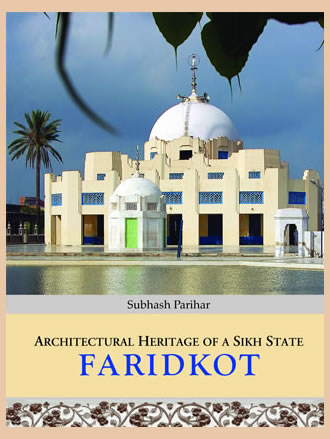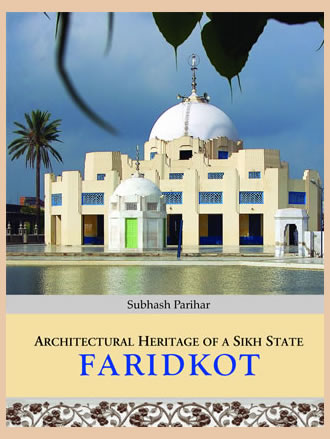ARCHITECTURAL HERITAGE OF A SIKH STATE: FARIDKOT
ARCHITECTURAL HERITAGE OF A SIKH STATE: FARIDKOT is backordered and will ship as soon as it is back in stock.
Couldn't load pickup availability
Genuine Products Guarantee
Genuine Products Guarantee
We guarantee 100% genuine products, and if proven otherwise, we will compensate you with 10 times the product's cost.
Delivery and Shipping
Delivery and Shipping
Products are generally ready for dispatch within 1 day and typically reach you in 3 to 5 days.
- Pages: xxviii + 292
- Format: HB
- ISBN: 9788173053863
- Edition: 1st
- Publisher: ARYAN BOOKS INTERNATIONAL
- Size: 22 cm × 28 cm
- Product Year: 2009
The Faridkot State was one of the Sikh States created in Malwa region of the Punjab during the later half of the eighteenth century. It came into its own under Raja Pahar Singh (1827-49) when the British extinguished the neighbouring mighty kingdom of Lahore. During the next one century, it prospered under Raja Wazir Singh (1849-74), Raja Bikram Singh (1874-98), Raja Balbir Singh (1898-1906), the Council of Regency (1906-16), Raja Brij Indar Singh (1916-18), the Council of Administration (1918-34), and Raja Har Indar Singh (1934-48). Throughout this period, the rulers and aristocracy built a vast variety of buildings which included forts, palaces, havelis, administrative buildings, educational buildings, hospitals, bazaars, gurdwaras, mosques, temples etc. Collectively, these buildings represent the style of architecture that flourished during the second half of the nineteenth and the first half of the twentieth century in the Sikh States of Punjab, which has not been studied so far. The book in hand is a pioneering effort in this direction. The book comprises eight chapters. The first chapter delineates the geographical and historical background of the region comprising the erstwhile Faridkot State. An analysis of the salient architectural features of the monuments is contained in the second chapter. The remaining six chapters document the monuments of the State on typological basis. The third chapter covers forts and royal palaces. The buildings for state machinery are recorded in the fourth chapter. The next chapter contains the survey of public secular buildings. The residential buildings form the subject matter of the sixth chapter. The seventh chapter covers memorials and the last chapter comprises a study of public religious buildings. These chapters are followed by an epilogue, an appendix, a glossary and a bibliography. The text is illustrated with 9 maps, 131 drawings, 35 colour and 196 monochrome plates. The book thus tries to capture the architectural heritage of Faridkot in all its rich splendour. It will prove to be an invaluable asset not only to the academicans, architects and libraries but also to the layreader.





